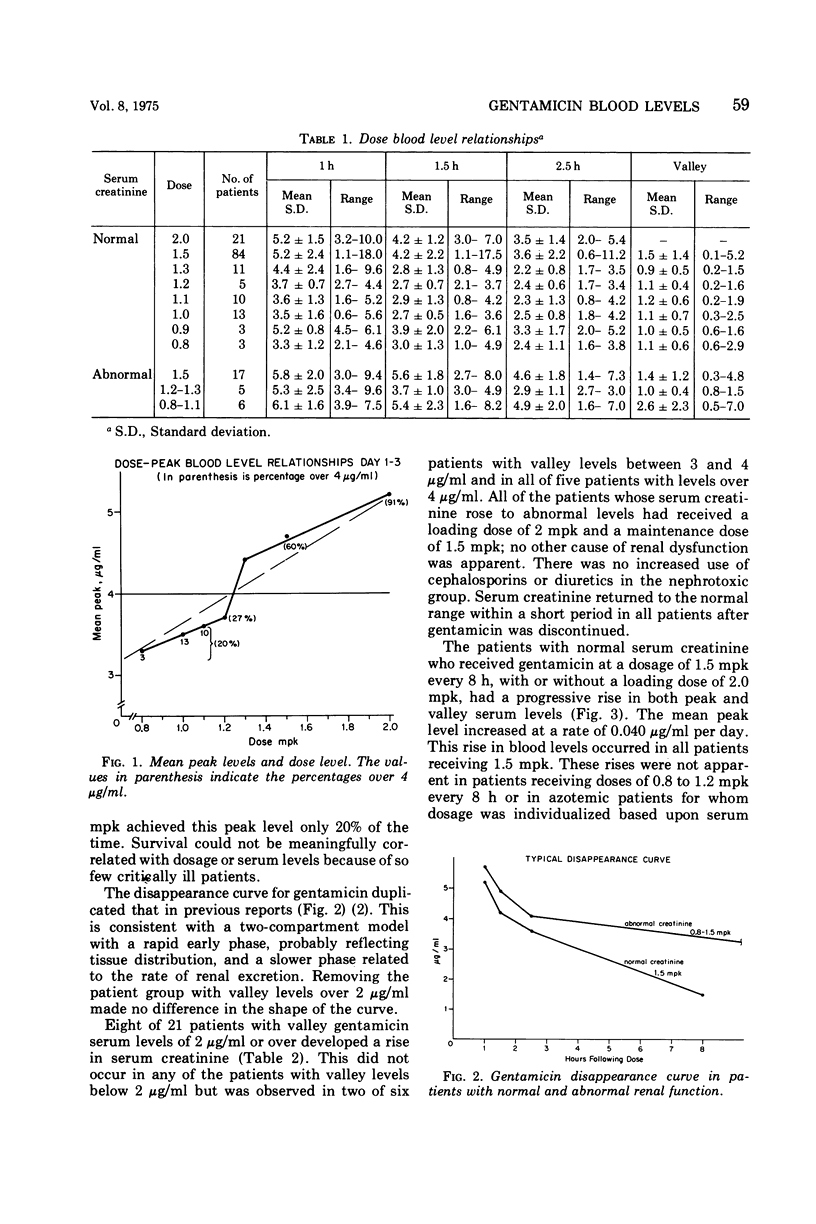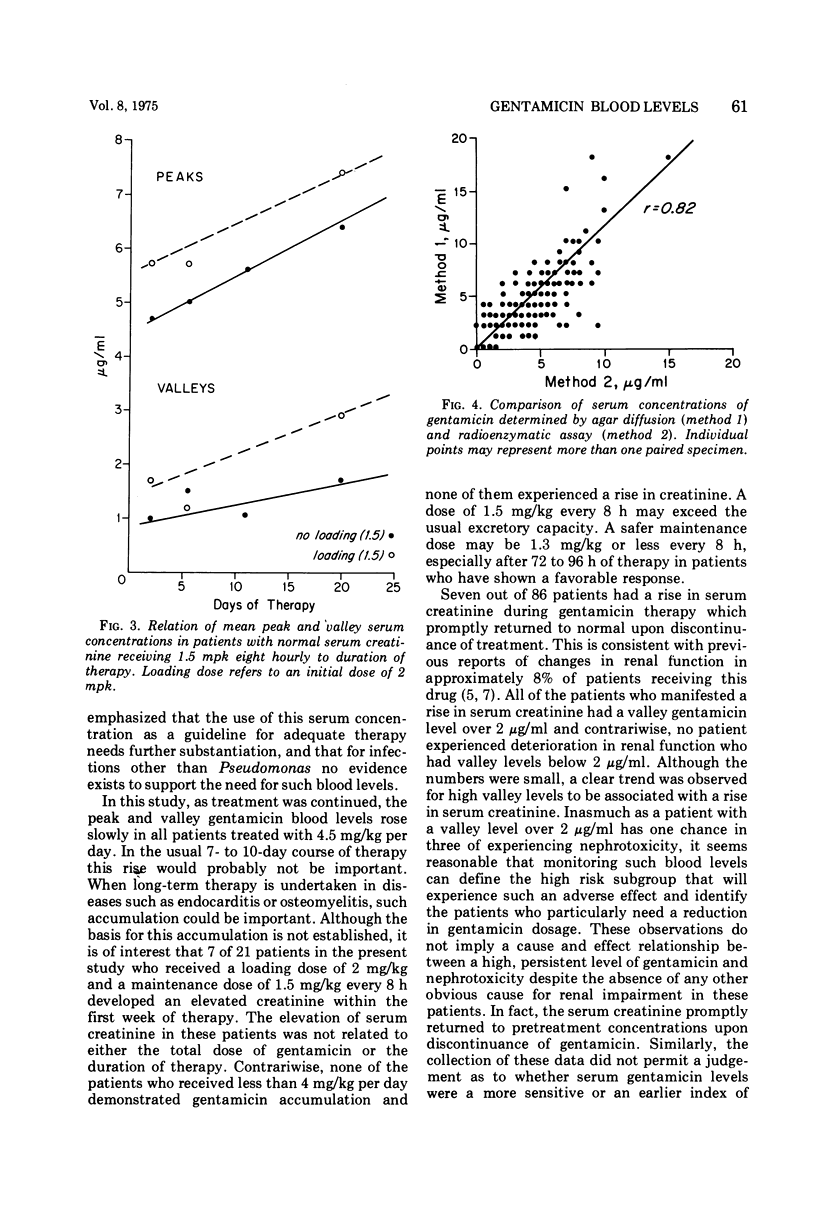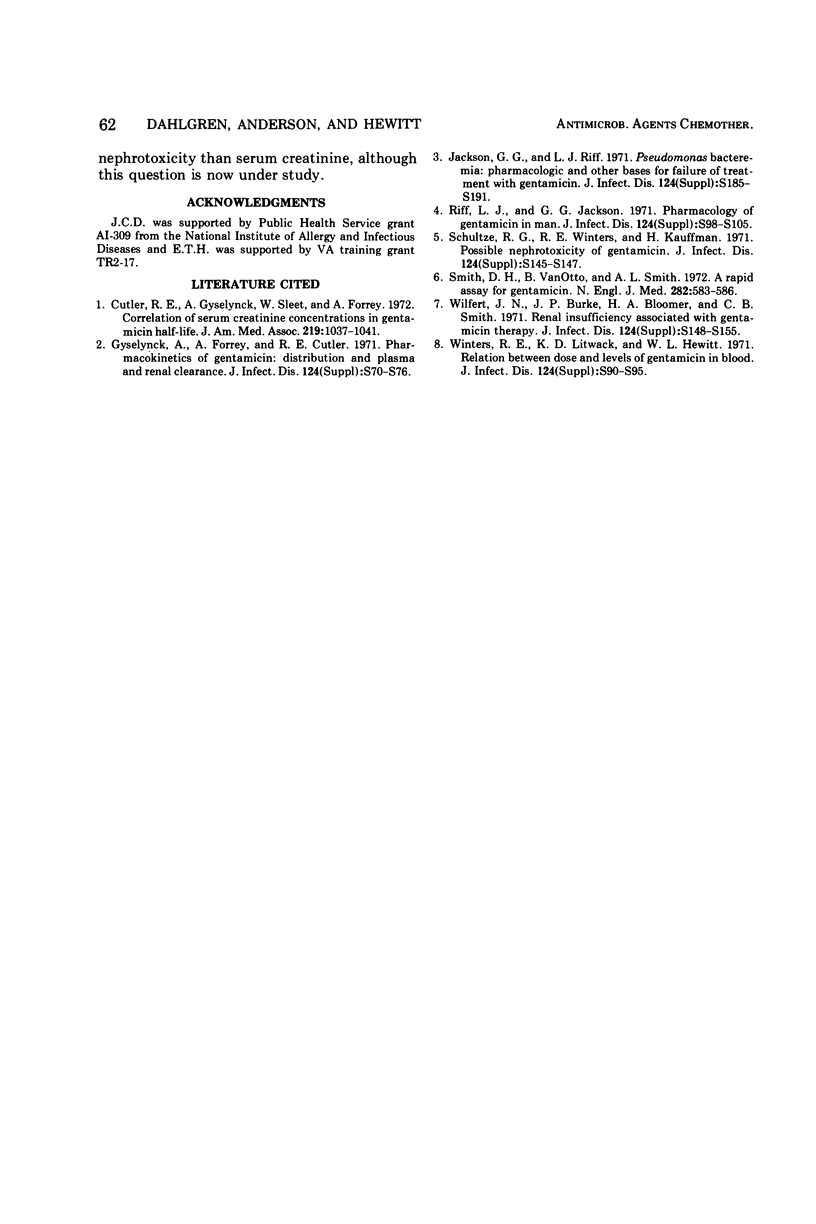Abstract
Gentamicin blood levels were monitored in 86 patients. Twenty-one patients had valley levels over 2 μg/ml and 36% of these patients developed abnormal serum creatinine or a further rise in creatinine. No patient had a rise in creatinine without a valley level over 2. The peak levels in patients with valleys over 2 were above 10 μg/ml in only one case, whereas four patients had peaks over 10 μg/ml without nephrotoxicity. The mean peak blood levels in patients with a normal creatinine were dose related. An initial dose of 2.0, 1.5, and 1.3 or less mpk (mg/kg) yielded mean peak blood levels of 5.2, 4.7, and 3.7, respectively. To assure an initial peak blood level over 4 μg/ml a loading dose of 2 mpk was required. A rise in peak and valley levels during therapy appeared dose related, being observed in all patients treated with 4.5 mpk daily but not in those receiving 3.0 mpk daily. A radioenzymatic assay was used to validate the standard agar diffusion assay method. The results from the two assays were statistically identical. Valley blood levels of gentamicin may be useful for predicting accumulation of gentamicin which in turn may be correlated with early renal impairment before potentially toxic serum levels of gentamicin develop.
Full text
PDF




Selected References
These references are in PubMed. This may not be the complete list of references from this article.
- Cutler R. E., Gyselynck A. M., Fleet W. P., Forrey A. W. Correlation of serum creatinine concentration and gentamicin half-life. JAMA. 1972 Feb 21;219(8):1037–1041. [PubMed] [Google Scholar]
- Gyselynck A. M., Forrey A., Cutler R. Pharmacokinetics of gentamicin: distribution and plasma and renal clearance. J Infect Dis. 1971 Dec;124 (Suppl):S70–S76. doi: 10.1093/infdis/124.supplement_1.s70. [DOI] [PubMed] [Google Scholar]
- Jackson G. G., Riff L. J. Pseudomonas bacteremia: pharmacologic and other bases for failure of treatment with gentamicin. J Infect Dis. 1971 Dec;124 (Suppl):S185–S191. doi: 10.1093/infdis/124.supplement_1.s185. [DOI] [PubMed] [Google Scholar]
- Riff L. J., Jackson G. G. Pharmacology of gentamicin in man. J Infect Dis. 1971 Dec;124 (Suppl):S98–105. doi: 10.1093/infdis/124.supplement_1.s98. [DOI] [PubMed] [Google Scholar]
- Schultze R. G., Winters R. E., Kauffman H. Possible nephrotoxicity of gentamicin. J Infect Dis. 1971 Dec;124 (Suppl):S145–S147. doi: 10.1093/infdis/124.supplement_1.s145. [DOI] [PubMed] [Google Scholar]
- Smith D. H., Van Otto B., Smith A. L. A rapid chemical assay for gentamicin. N Engl J Med. 1972 Mar 16;286(11):583–586. doi: 10.1056/NEJM197203162861106. [DOI] [PubMed] [Google Scholar]
- Wilfert J. N., Burke J. P., Bloomer H. A., Smith C. B. Renal insufficiency associated with gentamicin therapy. J Infect Dis. 1971 Dec;124 (Suppl):S148–S155. doi: 10.1093/infdis/124.supplement_1.s148. [DOI] [PubMed] [Google Scholar]
- Winters R. E., Litwack K. D., Hewitt W. L. Relation between dose and levels of gentamicin in blood. J Infect Dis. 1971 Dec;124 (Suppl):S90–S95. doi: 10.1093/infdis/124.supplement_1.s90. [DOI] [PubMed] [Google Scholar]


